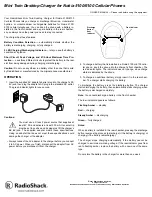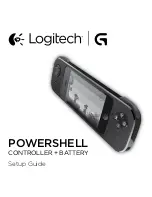
Samsung E1117L
Printed in Korea
Code No.:GH68-20713A
English. 09/2008. Rev. 1.0
Mobile Phone
user manual
Some of the contents in this manual may differ
from your phone depending on the software of
the phone or your service provider.
www.samsungmobile.com
safety and usage information
Comply with the following precautions to avoid dangerous or illegal situations
and ensure peak performance of your mobile phone.
Safety warnings
Keep your phone away from small children and
pets
Keep your phone and all accessories out of the reach
of small children or animals. Small parts may cause
choking or serious injury if swallowed.
Protect your hearing
Listening to a headset at high volumes can
damage your hearing. Use only the minimum
volume setting necessary to hear your
conversation or music.
Install mobile phones and equipment with
caution
Ensure that any mobile phones or related equipment
installed in your vehicle are securely mounted. Avoid
placing your phone and accessories near or in an air
bag deployment area. Improperly installed wireless
equipment can cause serious injury when air bags infl ate
rapidly.
Safety precautions
Drive safely at all times
Avoid using your phone while driving and obey all
regulations that restrict the use of mobile phones while
driving. Use hands-free accessories to increase your
safety when possible.
Follow all safety warnings and regulations
Comply with any regulations that restrict the use of a
mobile phone in a certain area.
Use only Samsung-approved accessories
Using incompatible accessories may damage your phone
or cause injury.
Turn off the phone near medical equipment
Your phone can interfere with medical equipment in
hospitals or health care facilities. Follow all regulations,
posted warnings, and directions from medical personnel.
Turn off the phone or disable the wireless
functions when in an aircraft
Your phone can cause interference with aircraft
equipment. Follow all airline regulations and turn off your
phone or switch to a mode that disables the wireless
functions when directed by airline personnel.
Protect batteries and chargers from damage
Avoid exposing batteries to very cold or very hot
•
temperatures (below 0° C/32° F or above 45° C/
113° F). Extreme temperatures can reduce the
charging capacity and life of your batteries.
Store the battery pack in a dry place.
•
Prevent batteries from contacting metal objects, as this
•
can create a connection between the + and – terminals
of your batteries and lead to temporary or permanent
battery damage.
Never use a damaged charger or battery.
•
Handle your phone carefully and sensibly
Do not allow your phone to get wet—liquids can cause
•
serious damage. Do not handle your phone with wet
hands. Water damage to your phone can void your
manufacturer's warranty.
Avoid using or storing your phone in dusty, dirty areas
•
to prevent damage to moving parts.
Your phone is a complex electronic device—protect
•
it from impacts and rough handling to avoid serious
damage.
Do not paint your phone, as paint can clog moving
•
parts and prevent proper operation.
Your phone and memory cards may be damaged
•
by exposure to magnetic fi elds. Do not use carrying
cases or accessories with magnetic closures or allow
your phone to come in contact with magnetic fi elds for
extended periods of time.
Avoid interference with other electronic devices
Your phone emits radio frequency (RF) signals that
may interfere with unshielded or improperly shielded
electronic equipment, such as pacemakers, hearing
aids, medical devices, and other electronic devices in
homes or vehicles. Consult the manufacturers of your
electronic devices to solve any interference problems
you experience.
Important usage information
Use your phone in the normal position
Avoid contact with your phone's internal antenna.
Allow only qualifi ed personnel to service your
phone
Allowing unqualifi ed personnel to service your phone
may result in damage to your phone and will void your
warranty.
Ensure maximum battery and charger life
Avoid charging batteries for more than a week, as
•
overcharging may shorten battery life.
Over time, unused batteries will discharge and must be
•
recharged before use.
Disconnect chargers from power sources when not
•
in use.
Use batteries only for their intended purpose.
•
Internal antenna
Turn off the phone in potentially explosive
environments
Do not use your phone at refuelling points (service
stations) or near fuels or chemicals. Turn off your phone
whenever directed by warning signs or instructions.
Your phone could cause explosions or fi re in and around
fuel or chemical storage and transfer areas or blasting
areas. Do not store or carry fl ammable liquids, gases,
or explosive materials in the same compartment as the
phone, its parts, or accessories.
Reduce the risk of repetitive motion injuries
When sending text messages or playing games on
your phone, hold the phone with a relaxed grip, press
the buttons lightly, use special features that reduce the
number of buttons you have to press (such as templates
and predictive text), and take frequent breaks.
Handle and dispose of batteries and chargers
with care
Use only Samsung-approved batteries and chargers
•
specifi cally designed for your phone.
Incompatible batteries and chargers can cause serious
injuries or damage to your phone.
Never dispose of batteries or phone in a fi re. Follow
•
all local regulations when disposing used batteries or
phone.
Never place batteries or phones on or in heating
•
devices, such as microwave ovens, stoves, or
radiators. Batteries may explode when overheated.
Never crush or puncture the battery. Avoid exposing
•
the battery to high external pressure, which can lead to
an internal short circuit and overheating.
Avoid interference with pacemakers
Maintain a minimum of 15 cm (6 inches) between mobile
phones and pacemakers to avoid potential interference,
as recommended by manufacturers and the independent
research group, Wireless Technology Research.
If you have any reason to suspect that your phone is
interfering with a pacemaker or other medical device, turn
off the phone immediately and contact the manufacturer
of the pacemaker or medical device for guidance.
Handle SIM cards and memory cards with care
Do not remove a card while the phone is transferring
•
or accessing information, as this could result in loss of
data and/or damage to the card or phone.
Protect cards from strong shocks, static electricity, and
•
electrical noise from other devices.
Frequent writing and erasing will shorten the life span
•
of memory cards.
Do not touch gold-coloured contacts or terminals with
•
your fi ngers or metal objects. If dirty, wipe the card with
a soft cloth.
Ensure access to emergency services
Emergency calls from your phone may not be possible
in some areas or circumstances. Before travelling in
remote or undeveloped areas, plan an alternate method
of contacting emergency services personnel.
SAR information
Your wireless phone is a radio transmitter and receiver. It
is designed and manufactured not to exceed the emission
limits for exposure to radio frequency (RF) energy set by
the Federal Communications Commission (FCC) of the
U.S. Government. These limits are part of comprehensive
guidelines and establish permitted levels of RF energy
for the general population. The guidelines are based on
the safety standards that were developed by independent
scientifi c organizations through periodic and through evalu-
ation of scientifi c studies.
The standards include a substantial safety margin
designed to assure the safety of all persons, regardless of
age and health.
The exposure standard for wireless phones employs a unit
of measurement known as Specifi c Absorption Rate (SAR).
The SAR limit set by the FCC is 1.6 W/kg. The highest
SAR values for this model phone as reported to the FCC
are Head: 0.5
2
W/kg, Body-worn: 0.
355
W/kg.


































